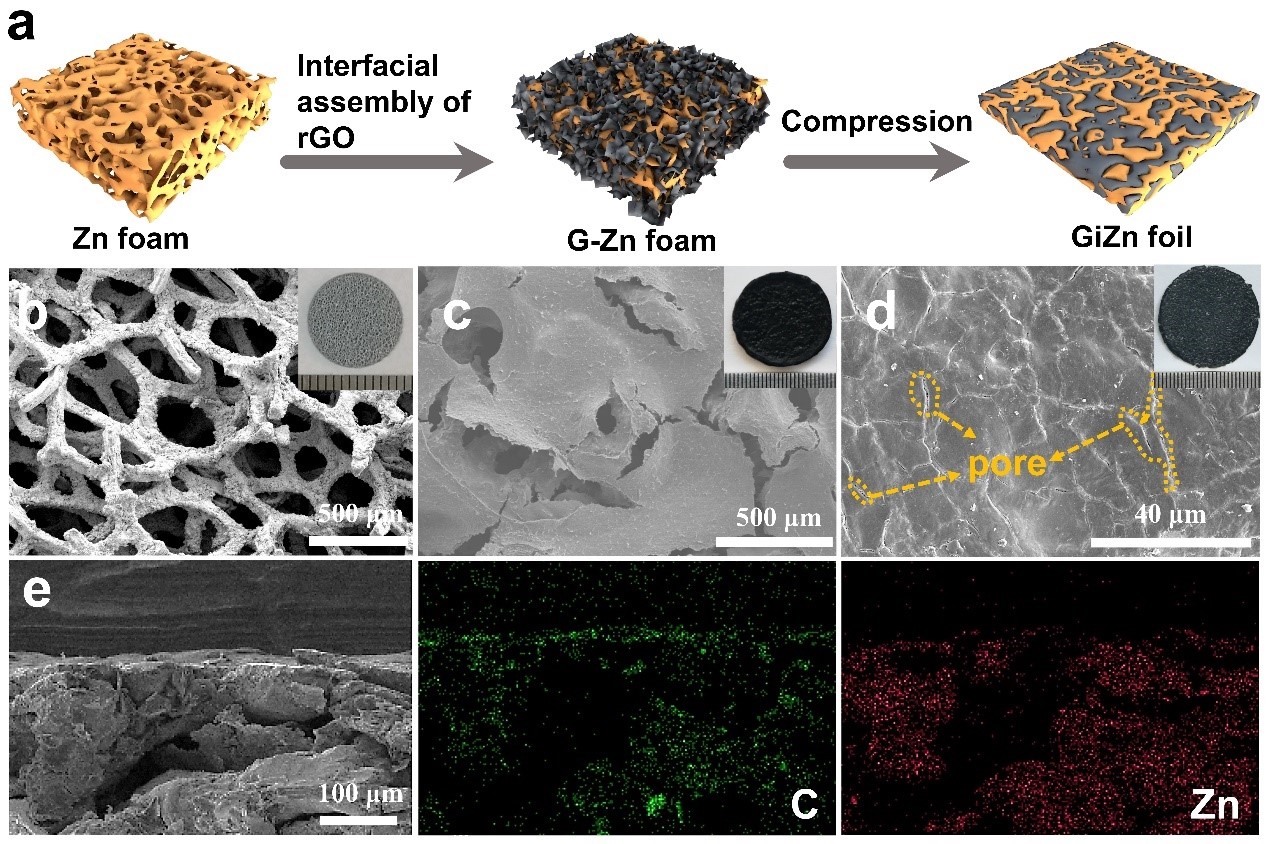Y. Li, L.S. Wu, C. Dong, X. Wang, Y.F. Dong*, R.H. He, and Z.-S. Wu*
Energy & Environmental Materials, 2022.
DOI: 10.1002/eem2.12423 [PDF]

Aqueous zinc ion batteries (ZIBs) with intrinsic safety have great potentials in portable devices, but suffer from limited cycling life mainly caused by serious dendrite growth and unavoidable side reactions of Zn anodes.Herein,graphene interpenetrated Zn (GiZn) hybrid foils are developed for dendrite-free and long-term Zn anodes for high-performance ZIBs. The GiZn anode is prepared by interfacial assembly of reduced graphene oxide (rGO) on the skeletons of zinc foams, followed by mechanical compression into hybrid foils and drying process. The presence of therGO nanosheets in the matrix of Zn based hybrid foils provides abundant zincophilic sites to induce horizontal Zn deposition forZn metal anodes without the growth of dendrites.Meanwhile, the uniform dispersion of rGO nanosheets endows the hybrid foils with superior conductivity and wetting ability with electrolytes for reduced interfacial resistances. As a result, GiZn based symmetric cells exhibit a small voltage hysteresis of 31 mV and remarkable areal capacity of 30 mAh cm−2at 0.5 mA cm−2.Further, GiZn anodes also enable the corresponding aqueous Zn||MnO2batteries with high capacity of 168.5 mAh g−1at 8 C, superior to the counterpart with pure Zn foil anodes (72.7 mAh g−1).Therefore, GiZn hybrid foil anodes will shed light on the rational construction of2D materials interpenetrated Zn hybrid foil anodes for high-performance ZIBs.